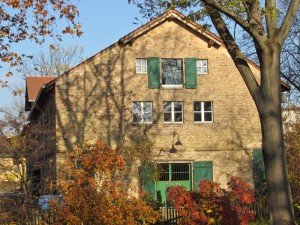 Ways of Protecting Your Investment From Wildfires
Ways of Protecting Your Investment From Wildfires
If your property is within two miles of a suburban community, in what FEMA (Federal Emergency Management Agency) calls the “Wildland Urban Interface” (WUI), there is an increasing danger of being subject to wildfires that continue to occur due to the continuing drought conditions in Texas which are predicted to carry on into next year. Unfortunately, it has been found that more than 80 percent of wildfires in Texas now occur within this WUI area as many Texans have left urban areas, seeking the beauty and peace of nature, only to find they are now exposed to dry brush and grassland bordering or near their properties.
In fact, April 9th through 13th is Wildfire Awareness Week in Texas and FEMA is taking the opportunity to inform Texas property owners about how to safeguard their properties from the danger of wildfire incursion.
“Whether you own your home or rent, it’s important to have a plan in place to protect your personal property, family and pets from the devastation of a wildfire,” said Kevin Hannes, FEMA’s federal coordinating officer for the 2011 Texas wildfire recovery missions. “Make a plan, build a disaster supply kit and stay informed. Those are the three key components to staying safe under any hazardous conditions.”
There are a number of precautions and safeguards that FEMA recommends for property owners to take to minimize the risk to wildfires.
Make your property defensible:
- Create a fire-safe landscape zone ranging from 30 to 100 feet around the home.
- Plant only fire-resistant shrubs and trees. For example, hardwood trees are less flammable than pine, evergreen, eucalyptus or fir trees. Carefully space tree plantings to avoid creating pockets of fuel.
- Create “fuel breaks,” such as driveways and gravel walkways.
- Remove ground fuels like grass, leaves, pine needles, dead limbs and twigs within 30 feet of the home. Clear all flammable vegetation and other materials. Remove branches that extend over the roof or power lines. Mow grass regularly.
- Trim all dead branches from trees in the yard and prune low hanging limbs to prevent fire from climbing to the crowns of the trees.
Within the home:
- Use fire-resistant roofing material, such as ceramic or slate tile, or standing-seam metal roofing.
- Protect the home’s eaves with stucco or plaster to prevent flying embers from starting a fire. Consider designing the home without overhangs or use fire-resistant soffits to protect it from embers and hot gases.
- Ensure that exterior wall coverings are fire-resistant and not susceptible to melting. Concrete, fiber-cement panels or siding, stucco, masonry and metal are some recommended materials.
- Use metal mesh screens to keep fast-flying embers out of vents and chimneys. Vents should also be made of metal.
“Living in the Wildland Urban Interface is much like living in a floodplain,” said Kevin L. Hannes, FEMA’s federal coordinating officer for two wildfire recovery missions in Texas. “Texans should know what risks exist related to their location and they should adopt safety measures to protect their families and their homes.”
Property management is a key action you can take to protecting your property and your investment. The experts at Herman Boswell Property Management can help you with the many aspects of your property to keep it from harm’s way. Give them a call.
